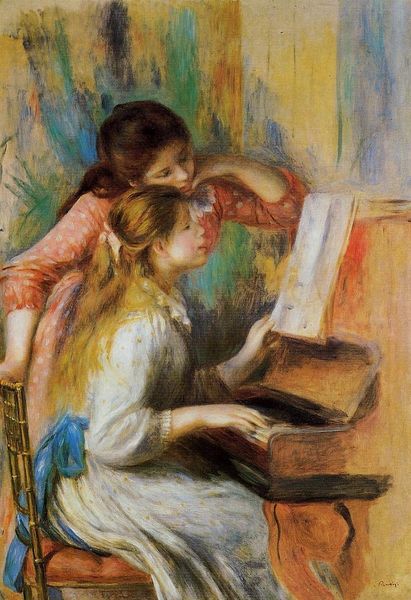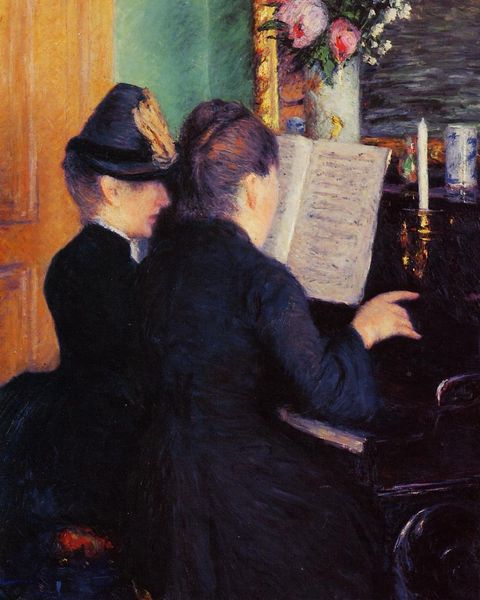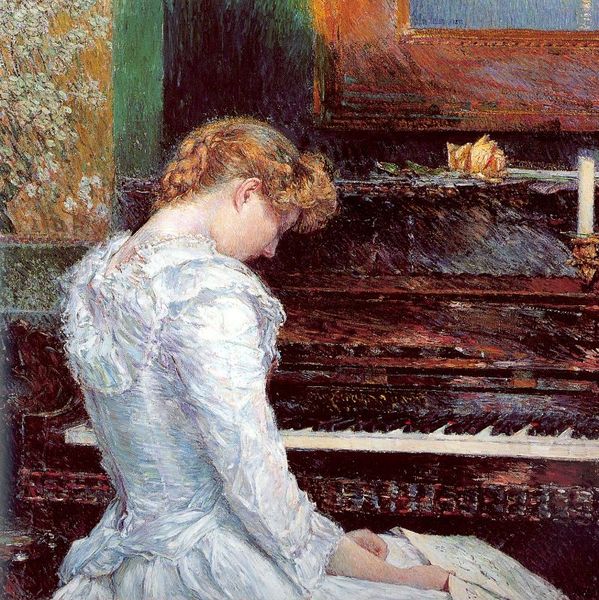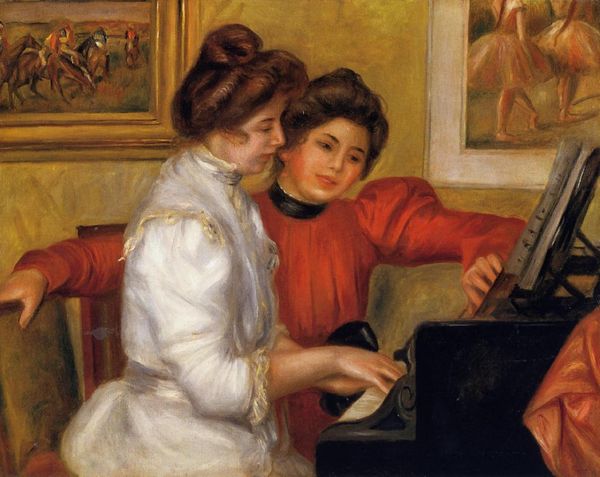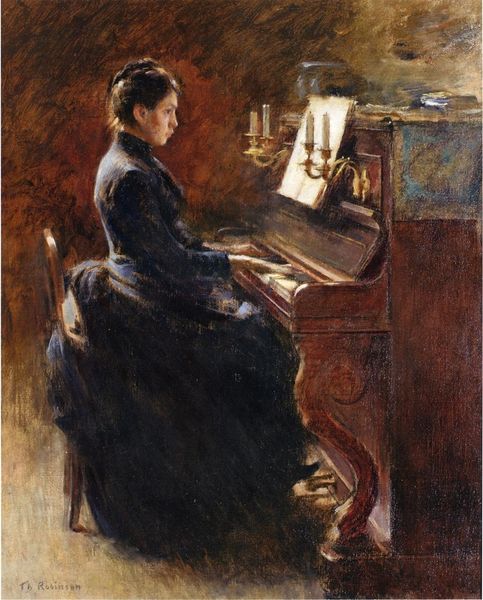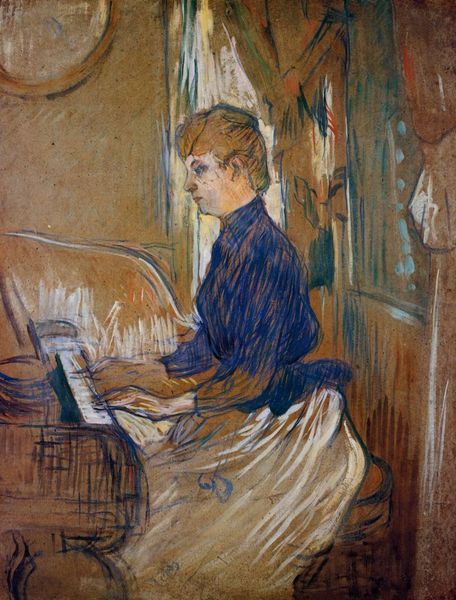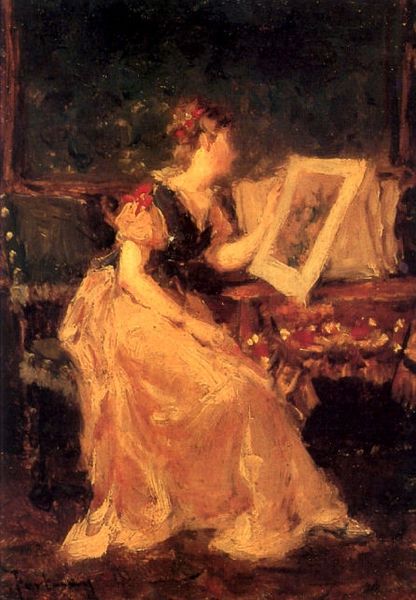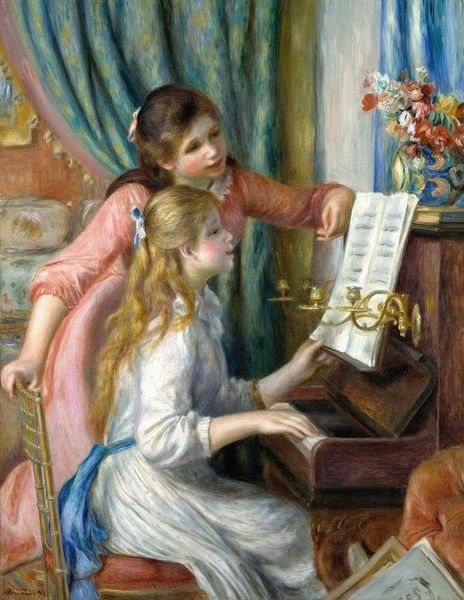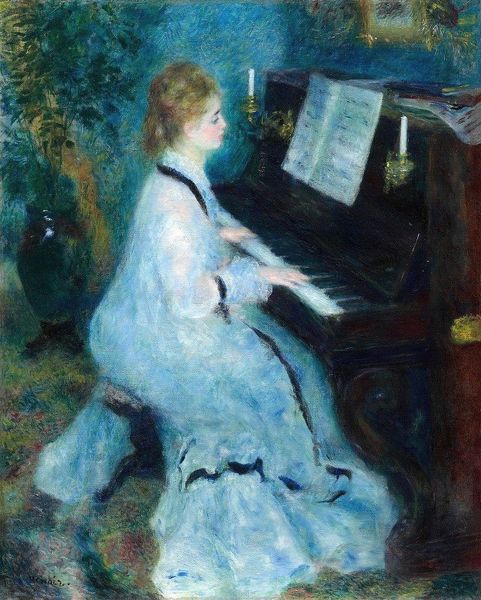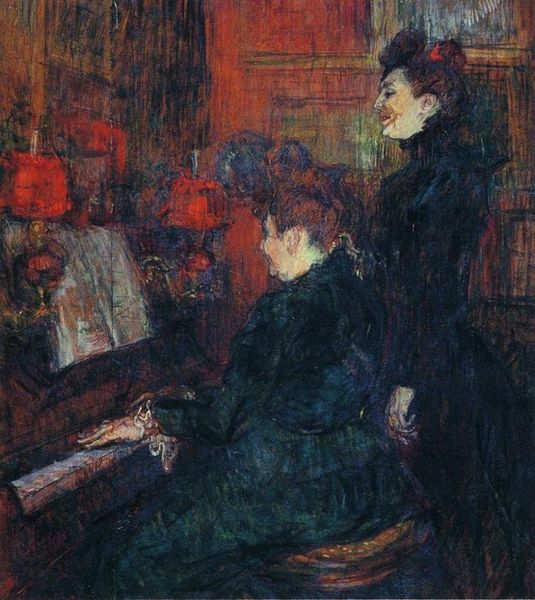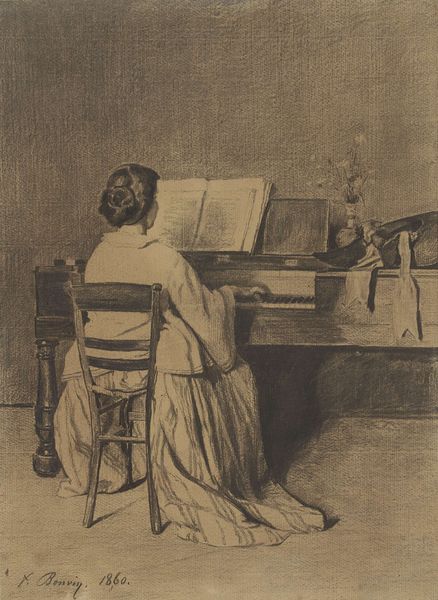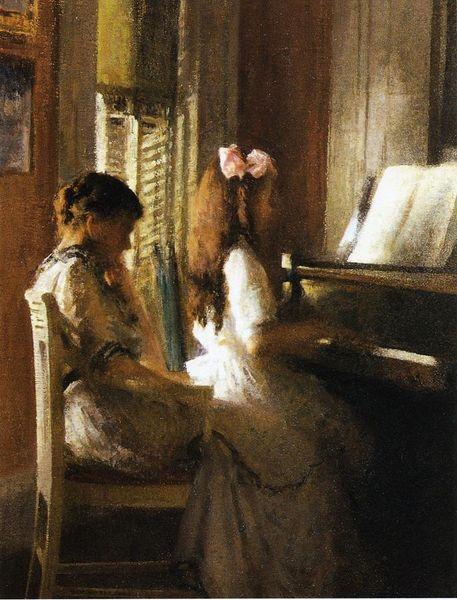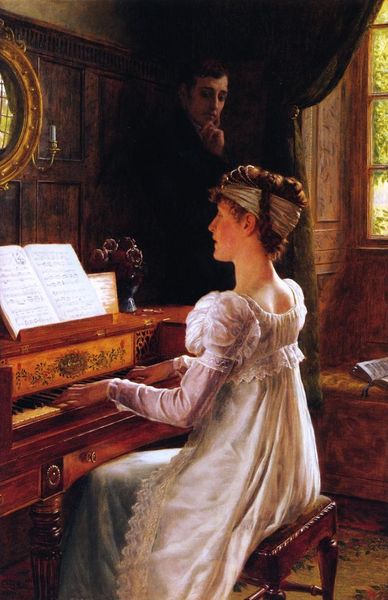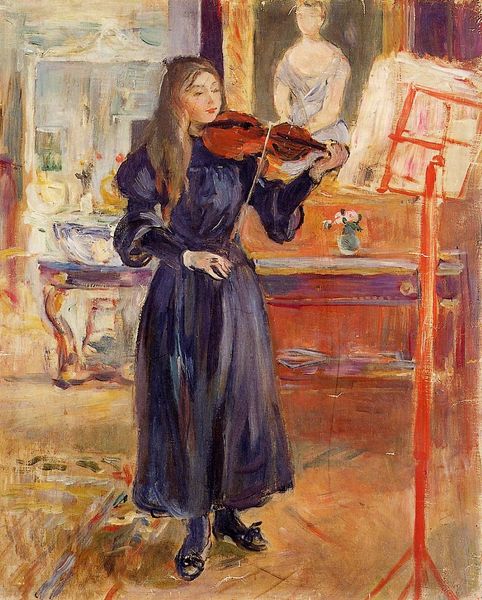
painting, oil-paint
#
portrait
#
painting
#
impressionism
#
oil-paint
#
oil painting
#
portrait drawing
#
genre-painting
#
portrait art
#
fine art portrait
Copyright: Public domain
Curator: Standing before us is Pierre-Auguste Renoir's "The Piano Lesson," painted in 1889. Renoir, of course, being a pivotal figure in the Impressionist movement. Editor: My first impression is that it's intensely warm – that dominant red really envelops the whole scene. There’s a tenderness too, in the way the woman leans in, guiding the girl. It almost feels maternal. Curator: Precisely. These kinds of domestic scenes became quite popular among the bourgeoisie, celebrating private life and the education of young women, aligning them with artistic sensibility and moral cultivation. The piano became almost a symbol of status and accomplishment. Editor: Yes, and the piano itself—with the flowers and candlestick—feels almost like an altar to domesticity. The music scores probably had their own symbolism, maybe related to romantic expectations for young women at that time. Music and painting, two of the sister arts, join in portraying ideal womanhood. Curator: Absolutely. The visual language emphasizes a certain controlled femininity—note the tight corsets. This carefully managed presentation of women reinforces certain ideals and hierarchies within that society. Think of the limited social roles for women beyond the domestic sphere. Editor: Yet there's an almost spiritual aspect to this as well. Music transcends earthly bounds and evokes emotion. The color red, so often associated with love, passion and religious significance, might deepen its message about the cultural expectation of these young ladies. Curator: You make an excellent point about that transcending of boundaries. Renoir blurs lines, not just in technique with his indistinct forms, but also between private life and its role in reinforcing larger societal narratives. One must wonder what happened after the music ended... Editor: After spending a moment with Renoir's art, I carry an enhanced perspective toward women’s status during that time, which resonates on various cultural and artistic levels, triggering various emotional impacts through a web of meaning embedded deep in memory. Curator: This reminds me of the power art possesses to reflect, reinforce, but also, to quietly question these conventions, adding complexity and perspective. Art, even a scene so seemingly gentle, provides a powerful glimpse into the culture that birthed it.
Comments
No comments
Be the first to comment and join the conversation on the ultimate creative platform.
